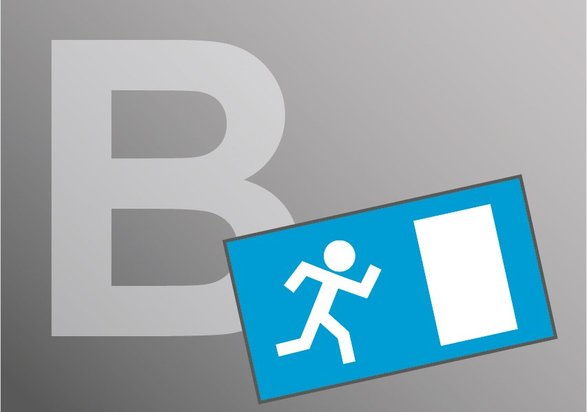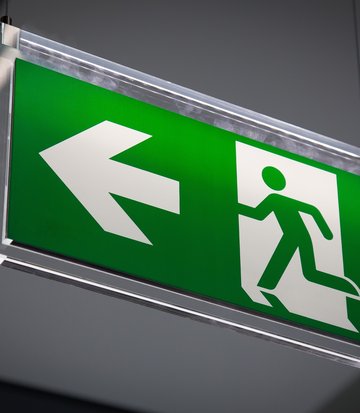Panic function B


Emergency exit doors are an essential part of escape and rescue routes, which must allow exit from a building or, alternatively, access to a safe area in an emergency. Emergency exit doors ensure that people can operate the door at any time, easily and without external aids, even in panic situations, so that they can leave the danger zone immediately.
Planning an emergency exit door is very complex. Depending on the requirements and utilisation of the element, a large number of standards and guidelines must be taken into account.
Anyone should be able to open the door in emergency situations. Often, emergency exit door elements in a building's outer shell are subject to corresponding burglary protection requirements. Depending on the circumstances, properties for use in the area of smoke and fire protection may be necessary.
In prestigious parts of the building, it may also be necessary to take aesthetic requirements into account.
This poses particular challenges for both planners and operators of buildings such as airports, research facilities or modern office complexes. WILKA offers suitable solutions here. We develop and produce certified locking technology for doors in escape and rescue routes. Our lock series meet the requirements of smoke and fire protection and burglary protection for single and double-leaf aluminium and steel door profile systems across all series. Our extensive product portfolio is supplemented by mechanical and mechatronic article solutions and rounded off by numerous cross-article accessories.
![Requirements for escape doors [Translate to Englisch:] Notausgangsschilder ermöglichen die schnelle Evakuierung von Personen in Gebäuden und stellen dadurch die Fluchtwegsicherung sicher.](/fileadmin/_processed_/1/d/csm_loesung-anwendung-fluchtwegsicherung-1_45b4a43c4e.jpg)
Since 2008, the two product standards EN 179 for emergency exit devices and EN 1125 for panic exit devices have been harmonised as European standards for emergency exit and panic exit devices. The standard specifies requirements and test procedures in order to be able to integrate a wide variety of lock and fitting combinations as a tested system on emergency exit doors.
For parts of buildings without public access such as office buildings or residential complexes
Applies to doors used as emergency exits in buildings where the use of escape routes by persons with normal physical ability must be guaranteed.
It must be possible to operate emergency exit devices with one hand without any special prior knowledge and without the need for additional actions (e.g. keys, rotary knobs).
The door must be easy to open when the emergency exit lock is operated. Horizontal or vertical operation is permitted. Possible fittings: Handle or push plate
The lock must be accessible at all times without a key or additional tools, even in the dark or in stressful situations.
The mechanism must be designed in such a way that it poses no danger to users and still functions reliably even when it becomes old or dirty.
The door must also allow people to be evacuated quickly and safely in the event of an emergency.
Emergency exit devices must be certified and labelled in accordance with the standard to ensure conformity with the safety requirements.
Applies to doors in publicly accessible, highly frequented buildings where visitors are not necessarily familiar with the area, e.g. cinemas, meeting places, shopping centres, where a panic situation can occur among large crowds.
It must be possible to operate the panic exit device with one hand and without any special prior knowledge.
The panic exit device must make it possible to open the door quickly and without particular physical effort in an emergency, even in the event of high occupancy and crowds.
The lock usually works by means of a horizontal push bar or touch bar, combined with an emergency exit door lock / panic lock.
The mechanism must ensure that the door opens quickly without being blocked or jammed, even in the event of heavy congestion or stress.
The door lock must not be blocked or impeded by obstacles during operation to ensure rapid evacuation.
The mechanism must function reliably even under extreme conditions such as darkness, moisture or contamination.
The lock must not require any special keys or tools. The door must be accessible at all times and be able to be opened without restrictions.
Panic exit devices must be clearly labelled and tested and certified in accordance with the standard to ensure safe use.